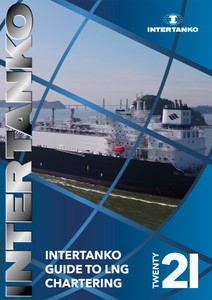
This second edition has been updated to reflect the substantial changes and new designs in the technical and operational aspects of LNG shipping and the transportation of LNG by sea since this book was first published in 2006. It is prepared as a practical handbook for the operation of LNG carriers, setting out guidance on onboard processes in a logical sequence, with an insight to the underlying chemistry.
This book is written for LNG Officers who require a better understanding of the mechanics and processes involved in operating a modern LNG carrier. The book is laid out with clear diagrams, checklists, guidance and instructions for each of the operations undertaken at each stage of a typical trading cycle for an LNG carrier including: post dry dock, drying of cargo tanks, inerting of cargo tanks, gassing-up the cargo tanks, initial cooldown of cargo tanks, cargo loading, laden voyage, cargo discharge, ballast voyage, ship to ship transfer and preparations for dry dock including warming-up of cargo tanks, inerting of cargo tanks and aeration of cargo tanks.
Preface
Acknowledgements
Section 1: General Information
1 Physical Properties, Composition and Characteristics of LNG
1.1 Overview
1.2 Flammability of LNG
1.3 Saturated Vapour Pressure (SVP)
1.4 Vapour Density
1.5 Safety Precautions in LNG Handling
2 Normal Trading Cycle of an LNGC
3 Cargo Containment Systems
3.1 Overview
3.2 Moss Rosenberg (Moss)
3.3 Mark III (GTT
3.4 NO96 (GTT)
4 Cargo Handling Equipment
4.1 Cargo Pump
4.2 Spray/Stripping Pump
4.3 High Duty Compressor
4.4 Low Duty Compressor
4.5 Gas Heater
4.6 Vaporiser
4.7 Reliquefaction Plant
4.8 Gas Combustion Unit (GCU)
5 Auxiliary Equipment
5.1 The Cargo Valves Remote Control System
5.2 Ship/Shore Link and ESD System
5.3 N2 Generator
5.4 IG Plant
5.5 Custody Transfer and Measurement System (CTMS)
5.6 Cargo Tank Gauging System
5.7 Gas Detection Equipment
5.8 Cofferdam Heating System
5.9 Vacuum Pumps
5.10 Tank Overflow Protection
Section 2: Post Dry-dock Operations
6 Operations Related to Auxiliary Systems
6.1 Moss Type LNG Carriers
6.2 Membrane Type LNG Carriers (Mark III and NO96)
7 Cargo Tank Operations
7.1 Drying of Cargo Tanks
7.2 Inerting of Cargo Tanks
7.3 Gassing-up the Cargo Tanks
7.4 Initial Cooldown of Cargo Tanks
Section 3: In-service Operations
8 Loading Operations
8.1 Overview
8.2 Preparation for Loading
8.3 Pre-loading Operations
8.4 Cooldown for Loading
8.5 Ramp-up to Bulk Rate
8.6 Bulk Rate Loading
8.7 Ramp-down
8.8 Post-loading Operations
8.9 Departure from Load Port
9 Laden Voyage
9.1 Overview
9.2 Laden Voyage of LNG Carriers with Gas Burning Propulsion System
9.3 Laden Voyage of LNG Carriers with Reliquefication Plant
9.4 Further Considerations on Laden Voyage
10 Discharge Operations
10.1 Overview
10.2 Preparation for Discharge
10.3 Pre-discharge Operations
10.4 Ramp-up to Bulk Rate
10.5 Operational Description – Bulk Rate Discharge
10.6 Ramp-down
10.7 Post-discharge Operations
10.8 Departure from Discharge Port
10.9 Further Considerations During Discharge
11 Ballast Voyage
11.1 Overview
11.2 Heel Management
11.3 Further Considerations on Ballast Voyage
12 Ship to Ship Transfer Operations
12.1 Pre-arrival Stage
12.2 Approach and Mooring Stage
12.3 Cargo Transfer Stage
12.4 Post-transfer Procedure
Section 4: Pre Dry-dock Preparations
13 Cargo Tank Operations
13.1 Warming up Cargo Tanks
13.2 Inerting of Cargo Tanks
13.3 Aeration of Cargo Tanks
Glossary
Witherbys
Witherbys titles are developed using scripts developed by technical experts that are peer reviewed within work groups. Typically, they seek to improve understanding of the regulations, recommendations and guidelines issued by Industry.
Witherbys staff have significant expertise in the fields of navigation and hazardous cargoes as well as in the presentation of complex subjects in a graphic and easy to understand manner.
- Number of Pages:
- 140
- ISBN:
- 9781856098717
- Published Date:
- January 2020
- Binding Format:
- Paperback
- Book Height:
- 300 mm
- Book Width:
- 210 mm
- Weight:
- 1 kg
- Author:
Witherby Publishing Group
- Preview:
- Yes
- Publication Date:
- January 2020






